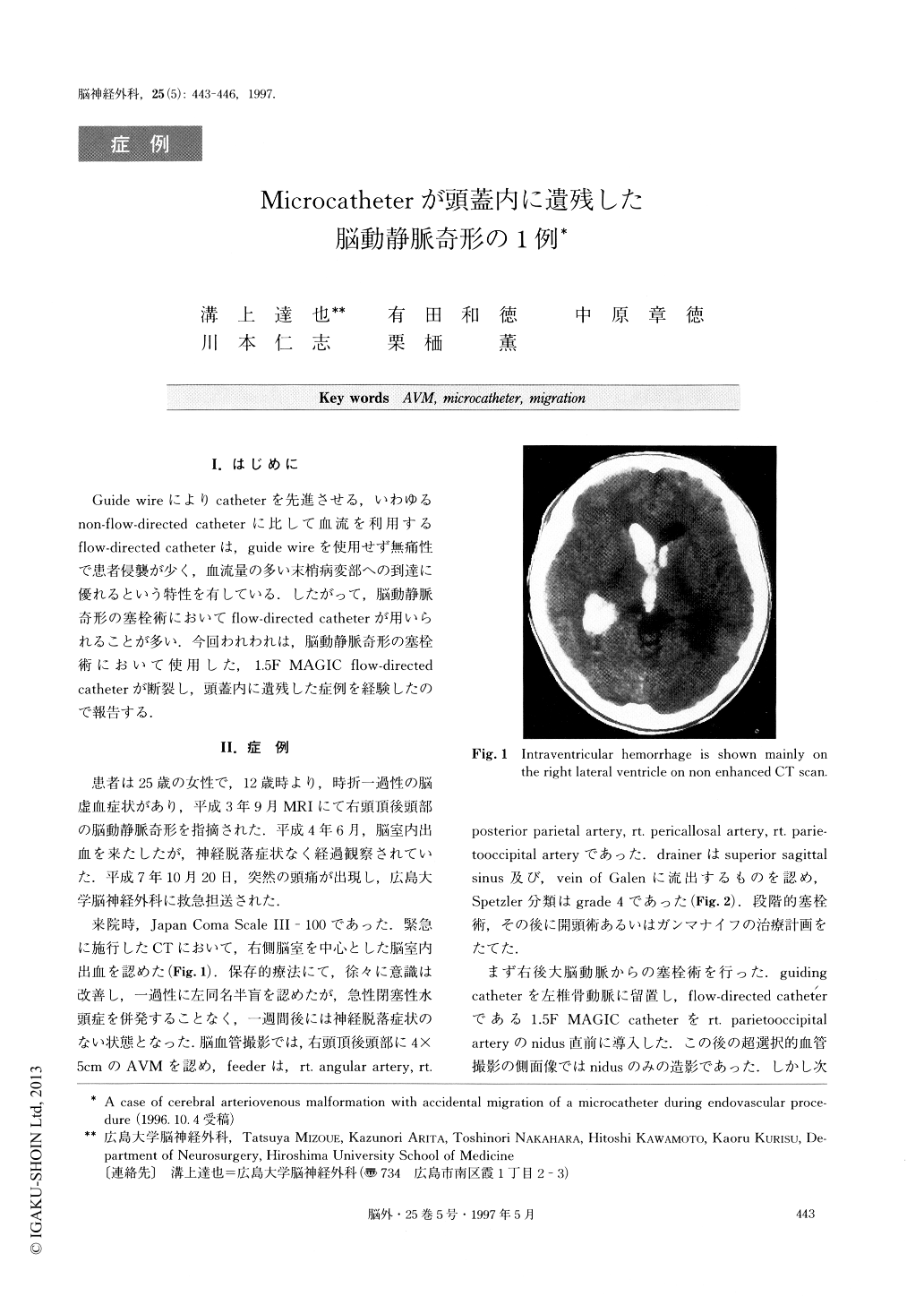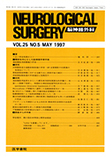Japanese
English
- 有料閲覧
- Abstract 文献概要
- 1ページ目 Look Inside
I.はじめに
Guide wireによりcatheterを先進させる,いわゆるnon-flow-directed catheterに比して血流を利用するflow-directed catheterは,guide wireを使用せず無痛性で患者侵襲が少く,血流量の多い末梢病変部への到達に優れるという特性を有している.したがって,脳動静脈奇形の塞栓術においてflow-directed catheterが用いられることが多い.今回われわれは,脳動静脈奇形の塞栓術において使用した,1.5F MAGIC flow-directed catheterが断裂し,頭蓋内に遺残した症例を経験したので報告する.
This is a report of a case of cerebral arteriovenous malformation with accidental breakaway of a micro-catheter during endovascular embolization.
A 25-year-old female suddenly suffered severe headache. CT scan demonstrated intraventricular hemorrhage,and the angiogram revealed right parieto-occipital AVM. We performed endovascular emboliza-tion using a flow-directed microcatether (1.5F BALT MAGIC catheter) 2 weeks after onset,and the micro-catheter broke accidentally and a fragment of the soft tip migrated to the distal posterior cerebral artery dur-ing the procedure. Although we tried to retrieve the catheter using several retrieval devices,we failed.Two days after the procedure we undertook surgical treat-ment. The migrated catheter was recognized in a small feeding artery which was stretched tightly, so retrieval was very risky. Using hemoclips for trapping the part of the catheter which remained in the feeder, we were able to retrieve it by cutting the feeder.
Flow-directed microcatheters are very usefull in en-dovascular procedures, but it is necessary to handle them carefully in accord with sufficient knowledge of their use and handling methods.

Copyright © 1997, Igaku-Shoin Ltd. All rights reserved.


